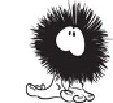HTML and CSS Reference
In-Depth Information
earlier. This element with rounded corners, a
gradient, and a drop shadow was created by
applying a mostly standard
CSS
rule.
The screenshot was taken in
IE8
. Here's the
CSS
(see the page in full in ch10/css-pie.html):
div {
border: 1px solid #999;
border-radius: 10px;
box-shadow: rgb(0,0,0) 3px 3px 3px 3px;
-pie-background: linear-gradient(top, #000, #fff);
behavior: url(../libs/PIE/PIE.htc);
}
There are two nonstandard properties here.
Behavior
is the proprietary
IE
property that allows all the magic to happen; it contains the
URL
of
the file that implements the behaviors.
-pie-background
is required
because, unlike
border-radius
and
box-shadow
,
IE8
already understands
the
background
property and will discard any values that it considers
invalid.
Summary
In this chapter, you've learned about features of
CSS3
for creating drop
shadows, rounded corners, background effects, and gradients. Most of
these effects could be accomplished visually with
CSS2
, but that would
involve creating images and various bits of additional markup to apply
them to elements. The
CSS3
approach removes the need for extra
markup and additional requests to the server and is easily adaptable to
the content—you don't need to re-create your background image just
because you decide to make an element 20 pixels wider.
CSS3 isn'T just for visual effects and background images; it also
includes several new features for the formatting and display of text. In
the next chapter you'll learn about using custom fonts, automatically
formatting text into columns, and advanced font control features.




